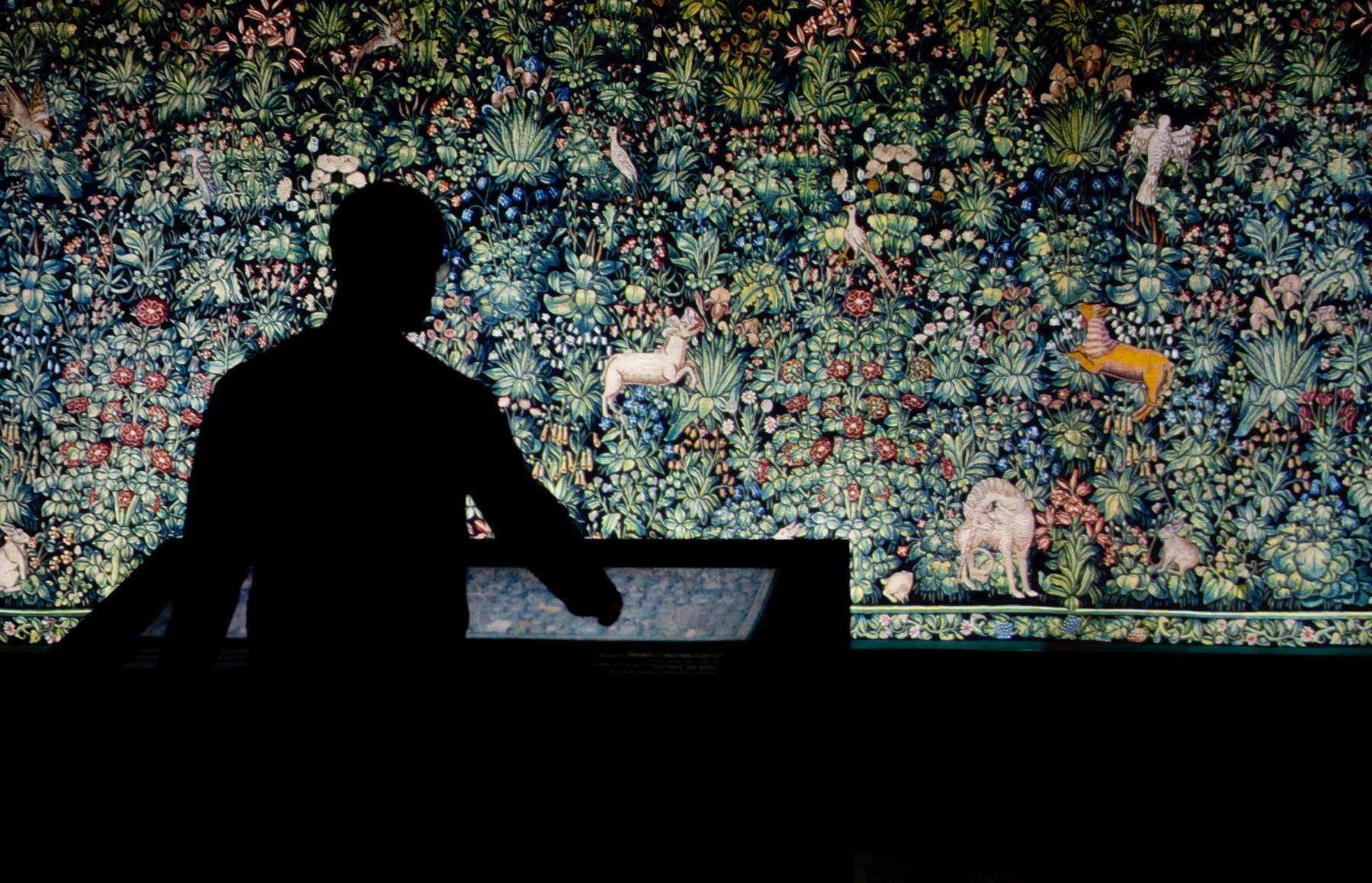From July 13 to August 25, 2024, the Palazzo dei Capitani in Cutigliano, presents the multimedia installation The Enchanted Garden, an interactive journey through themillefiori tapestry, a masterpiece of 16th-century Flemish textile art, preserved in the Museum of the Ancient Palace of the Bishops of Pistoia. The initiative inaugurates the Fuori Museo project by which works preserved in the Foundation’s premises will be exhibited, thanks to the collaboration of organizations and associations, to offer new educational and cultural opportunities. The installation of The Enchanted Garden in Cutigliano is also made possible thanks to the collaboration of the Municipality of Abetone Cutigliano, the Beatrice Study Center of Pian degli Ontani and the Ecomuseum of the Pistoia Mountains, and the Istituto Omnicomprensivo of San Marcello Pistoiese, whose classes will participate in a series of educational activities around the millefiori tapestry of Pistoia. The installation, promoted by Fondazione Pistoia Musei and Fondazione Caript, is conceived and created by the art collective camerAnebbia. The scientific content of the project is curated by Annamaria Iacuzzi and Cristina Taddei, conservators of Fondazione Pistoia Musei, and Gaia Ravalli, art historian at the Scuola Normale Superiore in Pisa, under the supervision of Monica Preti, director of Fondazione Pistoia Musei.
The Enchanted Garden allows visitors to interact thanks to a large touchscreen device, through which they can explore multimedia content of the Pistoia millefiori tapestry known as the “Adoration.” The work is one of the most important of Pistoia’s artistic heritage and depicts a refined flower garden also populated by wild and fantastic animals, such as the unicorn. There are about forty plants depicted, more than half of which actually exist, including three red rose bushes, interpreted as an allusion to the Trinity or the Virgin whose emblem the rose was, around which are a mammal, perhaps a dog, a griffin and a unicorn, which often symbolized Christ. Its history is still partly shrouded in mystery. The synthetic style suggests that it was made in the first half of the 16th century in Flanders, probably from the city of Enghien, where the production of millefiori tapestries developed early.
“Enhancing different territories through culture,” says Fondazione Caript President Luca Gori, “is among the main tasks we have entrusted to Pistoia Musei. I am happy that the first project of my term in this area is dedicated precisely to the Pistoia mountains, because attention to inland areas is among the priorities of our programming. The summer period is crucial for the economy of this area linked to tourism, and I believe that the installation in Cutigliano makes a significant contribution to qualifying the cultural offer of our mountains for those who choose it as a destination for their vacations.”
“I really care about Fuori Museo,” emphasizes Fondazione Pistoia Musei director Monica Preti “A new initiative that we are inaugurating with this appointment in Cutigliano. Fuori Museo was born out of a desire to share works, projects, and ideas in contexts outside our venues and to actively engage communities and places. As on this occasion, thanks to the collaboration with the Municipality of Abetone Cutigliano and the Beatrice Study Center in Pian degli Ontani, which is also realized by involving people who will welcome visitors and who will help us create further interest in the millefiori tapestry, kept in the Museum of the Ancient Palace of Bishops, through a very creative use of digital technology.”
“It is with great pleasure,” says Abetone Cutigliano Mayor Gabriele Bacci , “that we host in the Palazzo dei Capitani, headquarters of the Abetone Cutigliano Municipality, the installation The Enchanted Garden. This is undoubtedly a great opportunity for all citizens and tourists who will be spending their days in our territory during the summer period and, of course, one more reason to come to Cutigliano. The Palazzo dei Capitani is a building rich in history, the most beautiful in the entire Pistoia mountains, which we would like to enhance even more by making it a fixed venue for exhibitions and art installations. Our mountain has much to offer, not only in winter, but also in summer, and that is why, as a municipal administration, we intend to develop a path of collaboration with the various cultural institutions, such as the Fondazione Pistoia Musei, which, together with Fondazione Caript, the Centro Studi Beatrice and the Ecomuseo della Montagna Pistoiese, has promoted this initiative to increase the overall offer in the area.”
Hours: Monday to Sunday, 10 a.m.-12 p.m.; 5 p.m.-8 p.m.
Free admission
 |
| In Cutigliano, the Millefiori Tapestry lives again in a multimedia installation |
Warning: the translation into English of the original Italian article was created using automatic tools. We undertake to review all articles, but we do not guarantee the total absence of inaccuracies in the translation due to the program. You can find the original by clicking on the ITA button. If you find any mistake,please contact us.